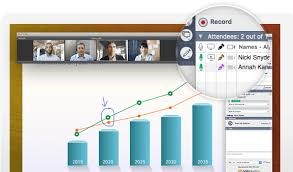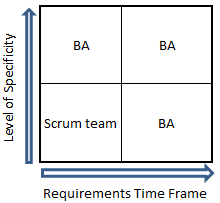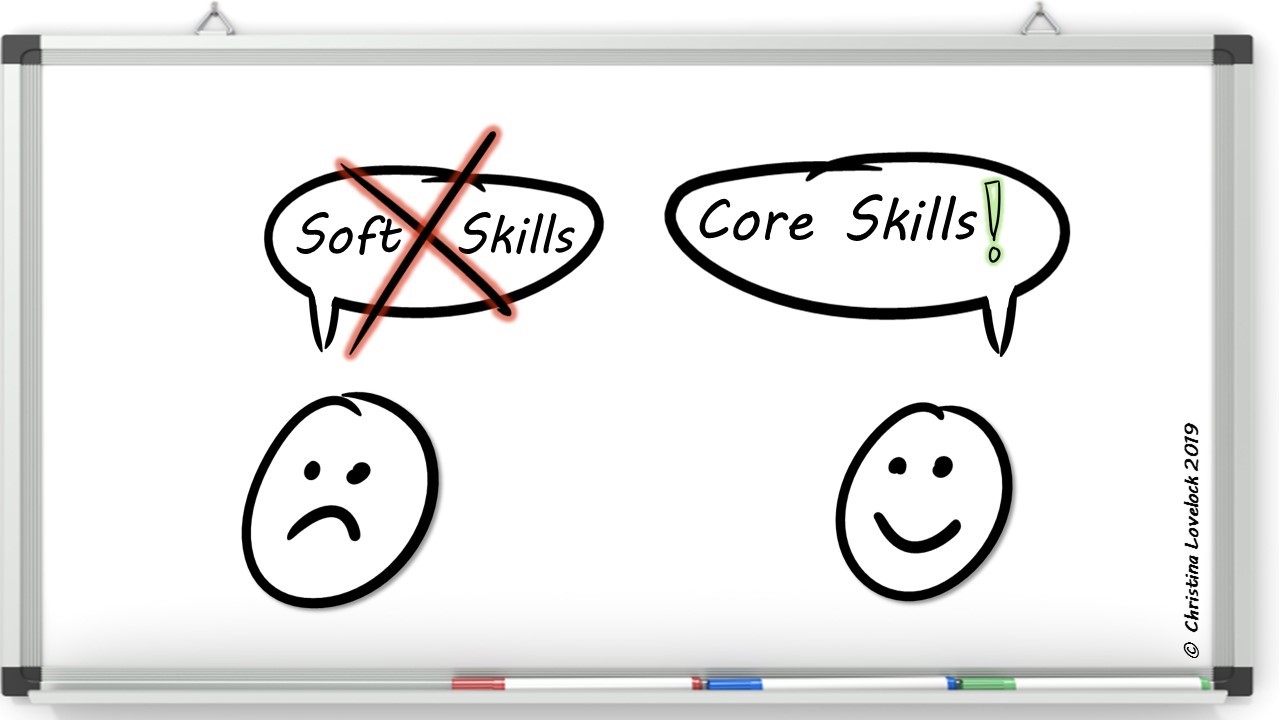Think you’re a Business Analyst (BA) not a Salesperson? Think again…
When I began training to be a BA, I never dreamt that I would need to be a salesperson too,
in fact, I’m glad I hadn’t realised that as it may have deterred me from, what is for me, the most suitable and fulfilling career that I could have wished for.
Over the last few months I have worked alongside the CEO, Business Unit Heads and other senior stakeholders to deliver a Competency Framework for 6point6. The framework acts as a blueprint that sets out all the competencies needed per role to establish and run the business successfully on a day to day basis. This project has given me visibility of all the roles, levels and disciplines that make up a prosperous consulting firm and has allowed me to see what skill separates the junior, mid-level and senior roles throughout the organisation. The answer is simply this: the ability to sell. The better you are at selling, the more senior you are likely to become, and this is true across the whole business, it doesn’t just apply to Business Analysts.
Luckily, my first BA role was in the public sector where the idea of making money had a minimal impact on my role, but in recent years, I have been working in two contrasting commercial environments. This is where I realised that in a sales-related role pressures can vary vastly across sectors for BAs.
It’s fair to say that the last few years have been the most challenging for me as an analyst, although I can honestly say that this has been the time in which I have learnt the most about being commercial.
The truth is that the more commercial the environment, the more your analysis and sales skills come under scrutiny. It’s not enough to be a solid analyst in this environment, if you really want your career to excel or even remain buoyant, you need to be able to ‘do sales’ too. To succeed, you need to admit to any deficiencies and awaken a new skill set as an accompaniment to your usual analysis work.
If you’ve found yourself in a similar position, you may wish to explore the concept of selling and how it can impact your role as a BA. The following thoughts are from my experiences and may help you on your own BA sales journey:
How You Need To Adapt
Your attitude always needs to be positive – aim to be helpful and informative, not pushy.
Know that it’s okay to be your genuine self, you don’t have to morph into a different person overnight. You are there as a BA above all else and need to show that you are an experienced analyst and know your stuff. Relax and do what you are best at.
Aim to make a consistently good impression with prospects and clients and make a concerted effort to look sharp and be prepared for every meeting.
Getting Sales Experience
If supporting the sales process is new to you, ask your best salespeople for any tips that may be useful. Perhaps you can ask to shadow them during a sales engagement.
Have a go and learn what you can, don’t be afraid to ask for feedback on your performance. We can always improve and raise our game!
Working Together
Once you have the opportunity to work closely with your salespeople on the front line; understand that they may have different personalities, views and approaches to your own. They will at least have very different objectives, in fact some might say that salespeople bring the jazz hands and you bring the substance when selling, but whatever the analogy, you need to work together with mutual respect to understand how to give your organisation the best chance of selling professional analysis services.
You need to work as a team to target the right markets and organisations, establish how to differentiate your services from the competition, analyse how to solve client pain points and keep leads warm.
The sales team will always be looking for ways to highlight your greatest selling points and you can help them with the following tips:
Do Your Research
As with any project, you need to be well-read but when you’re in a commercial environment you need to do even more on a much grander scale. As soon as a potential sales prospect appears on your radar you need to learn about the organisation, their industry and the competition. Start by researching the business, conduct simple ‘What, why, when analysis’ to understand the basics, locate or map out their organisation chart and use LinkedIn to find out who the key people are that you need to engage with. Understand their business model and critical success factors and find out what you can about their product or service roadmap.
Once you have this information, run an internal session with the sales team and other stakeholders involved in the process to share your findings in preparation for the next engagement.
Employ Sales Techniques
Your sales team will want to ensure that the prospect is worth pursuing before committing resources to any further work. They may do this by employing one of the following sales techniques to qualify and prioritise the deal in relation to other sales leads:
BANT (Budget, Authority, Needs and Timeline) is a sales qualification methodology that helps to determine whether a prospect is a good match for you based on their budget, their ability to buy from you, their need for your product, and the purchase timeline.
CHAMP (Challenges, Authority, Money and Prioritisation) is thought to be a modern version of BANT and describes key questions that need to be answered to better qualify leads and close sales.
SPIN (Situation, Problem, Implication and Need-Payoff) is an acronym relating to four types of sales questions designed to bring a prospect into interest and through to a sale.
Regardless of the method used, if the opportunity is not worth pursuing at this stage, you may still wish to leave the door open for something more fruitful later. Now that you’ve had the chance to understand their business you can use that knowledge to suggest analysis opportunities in the future and set up regular check-ins to keep in touch.
Understand The Two Sales Personas
In sales there are two personas: Hunters and Farmers. Hunters chase brand new sales leads and aim to close as many deals as quickly as possible, whereas farmers look to source more business from existing clients and do this through the development of long-term client relationships. A strong sales team will no doubt utilise and balance both approaches, and as a BA you will be able to help both scenarios in the following ways:
Hunting:
- Look out for opportunities on procurement websites
- Use your industry contacts to look for new work and tell everyone what your company does
- When an opportunity has been identified, help the initial bid process by writing ITT (Invitation to Tender) / RFP (Request for Proposal) responses to detail why you are the best supplier for the job
- Where an RFP response has been successful; lead on all analysis elements for the bid presentation, create bid content and use case studies (only where you are free from client Non-Disclosure Agreements) to show how you have previously delivered what they are asking for and detail how you would approach and satisfy their personal requirements
Farming:
- Develop relationships with your clients on every project and act as their trusted advisor
- Understand their business; the risks, how they make a profit, what they need to succeed and so on
- Identify other opportunities where analysis could help to solve their business problems
Pre-Sales Analysis Workshops
You often only have one chance to make the right impression with a new prospect, even with new faces from existing clients. This adds a lot of pressure; you need to ensure that your workshops are engaging and fill the audience with confidence in your ability to understand, analyse and deliver quality outputs, you don’t want to deter people from buying from your organisation. If you have ever read the book ‘Pitch Anything’ by Oren Klaff, you will understand what I mean by this. You need to hook people into what you are selling, help them to relax enough to let their guard down and clearly demonstrate how your offerings can be used to resolve their issues. You need to do all this while remaining calm, humorous and professional. Sounds easy right? It isn’t necessarily easy for everyone, but solid preparation is the key to successful workshops.
At the end of the workshop, ensure that you have summarised pertinent points from the session and your next steps clearly, try and leave your prospect with something of value and follow up with professional documentation from the session:
Documentation
Any documentation you share externally needs to be of an excellent standard, look professional and be error free, tidy and consistent. This advice applies equally to internal clients but is of paramount importance when you are trying to sell your services externally. The following points act as a checklist for all of us but may be particularly helpful for entry level BAs who are bravely diving into the pre-sales process:
- When choosing techniques and models, select the ones that emphasise the points you are trying to make. All models and diagrams should be neatly documented, well-aligned and symmetrical if appropriate. Each diagram should be referenced with a figure number and description.
- Adopt an organisational document style with consistent sections, fonts, font sizes, colours, line spacing, headers, footers and page numbering.
- Begin the document with a front sheet showing your organisation’s logo and your prospect / client logo.
- Provide a Table of Contents that can be auto-updated during the creation of the document. Remember to update one final time just before sharing the document.
- Section headers could include: Introduction and background, Engagement details, a problem section which aims to describe the understanding of the problem that you can help with, a solution section, conclusions and recommendations, follow up information, contact details with team names and roles.
- Approach cost modelling with caution, you may wish to add costs into full documentation and leave them out of presentation slides so you can choose your moment to touch on this sensitive topic. Always discuss costs with your salespeople to ensure that the right price is quoted for the work and relationship. For example, your organisation may feel it appropriate to offer a discounted rate now in exchange for the possibility of gaining a long-term client.
- Clearly thank the reader for their time during the engagement to date and state that you would be delighted to support them further if they wish to proceed.
- Make sure your documents are audience appropriate and pitched at the correct level. For example, senior executives are less likely to be interested in exhaustive detail, they are more likely to want an overview of your offering, and similarly, end users will want to delve into the detail and really understand how their lives may be impacted by any proposed changes.
- Once you are happy with the document, take the time to finesse it before sending it out for review. Double check the points above and ensure that references to ‘we’ relate to your organisation and references to ‘you’ relate to your sales prospect.
- Request proofreading from someone who has no stake in the sales proposal who can concentrate on grammar and spelling. Once revised, schedule peer reviews by a salesperson and / or senior manager who can focus on the content and make sure that the document is in an impressive shape before you share it. You need to impress your managers and fill them with confidence in your consulting skills too!
- This advice also applies to any accompanying or attached documents and a top tip is to always open and double check any email attachments prior to pressing send!
Get More Involved In Marketing
As you progress through your BA career you may find yourself in a leadership position. This will naturally involve a greater focus on selling BA services.
You will need to work closely with the marketing team to put together BA offerings and create Go-to-Market strategies. It will help to understand how much money your BA function is currently turning over each year in comparison to targets defined by your CFO. You will need to identify value propositions for your offerings and align them to your identified target markets.
Conclusion
Selling may not be for every BA, but even if you can improve your sales technique a little it has the power to enhance your career exponentially.
It would be a mistake to assume that you don’t need to worry about sales as a commercial BA but ultimately, there is nothing wrong with letting your genius shine through your solid analysis work either. It just helps if you can sell or at least apply some commercial acumen.







